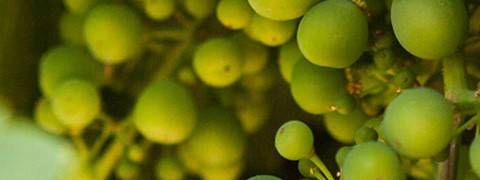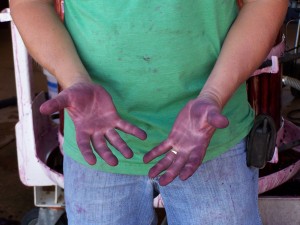


Click for Winemaking Slide Show
I’ve been raised in a winegrape growing family but I have to admit that winemaking was a little baffling to me. I knew the grapes went to the winery, got crushed, fermented and bottled…..end of story. I had no idea until recent years how much care really goes into handcrafting small lots of wines. So, I thought you may be interested in the simplified version.(Chad-our winemaker- still loses me when he starts talking chemistry.) If you click on the slide show above you can see a little of what goes into it all.
When the bins come out of cold storage they are inoculated with yeast and begin fermentation. The fermenting grapes are punched down 3 times daily extracting tannins and color from the skins. Each day the temperature and brix (or sugar) are measured to monitor the progress. When fermentation is completed the grapes are put into the basket press and then put under pressure to pull out the juice (or actually wine, at this point). This wine then goes into a 500 gallon tank to settle out the yeasts and any other solids before being put into barrels to begin aging.
And that’s an abbreviated version of just the first 2 weeks of a red wine’s life!!!! But it’s a start and it catches you up with about where we are in the season. Below is the PROOF that our wines are really hand crafted. Cheers to the 2008 harvest!!!
